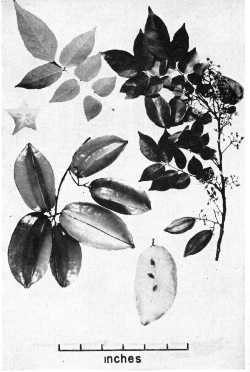USDA: 10-12
Frost Tolerance: Damaged at 30°F (-1°C), killed at 26°F (-3°C)
Sun Exposure: Full sun, slow growing in light shade.
Origin: Indochina
Growth Habits: Evergreen tree, up to 35 feet tall (10 m)
Watering Needs: Regular water
Propagation: Seeds, layering
The Carambola, native to Indochina, is an attractive ornamental tree that attains a height of 30 to 35 feet. The odd-pinnately compound leaves have 3 to 11 leaflets, which are ovate or ovate-lanceolate.
Blooming Habits:
The small, fragrant, rose-colored flowers are produced in cymes from the leaf axils or laterally on the stems.
Fruiting Habits:
The ovoid to ellipsoid yellow fruits are 4 to 5 inches in length and are acutely 5-angled. The fruits are star-shaped when cut across and are crisp, juicy, and aromatic, although usually acid in taste. One form is called the "sweet carambola" because it lacks the acid taste. The fruits have been reported to contain 50 percent of reducing sugars on a dry-weight basis and to be a good source of vitamins A and C. The ripe fruits are used for preserves, jams, and jellies. The star-shaped cross sections make an attractive addition to salads.
Propagation:
The carambola can be grown successfully on soils ranging from sands to heavy clays and is reported to be drought resistant after it has become well established. Propagation can be accomplished readily with seeds, and budding also has been successfully used.
Desert-Tropicals is dedicated to provide gardening advice, gardening ideas, and information about flower of all kind for landscape and collections.We try to check carefully the identification of the plants on the illustrations as well as the other information from the page, but occasionally errors do occur. if you notice anything that needs to be changed please contact us.Thanks.
© 1998-2020 Philippe Faucon, All Rights Reserved.
